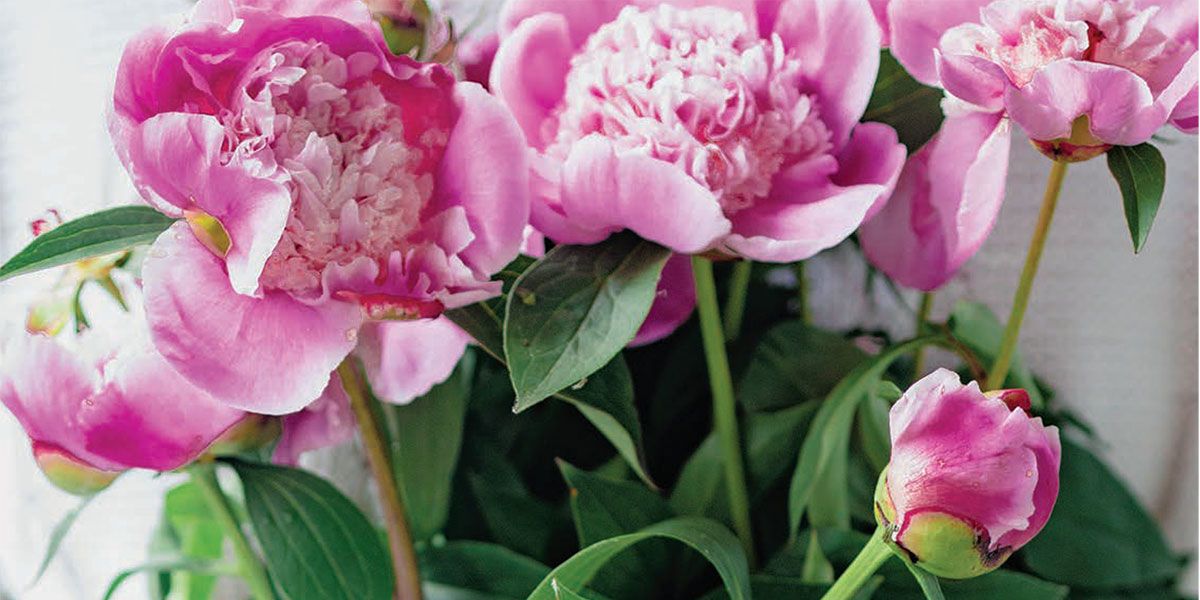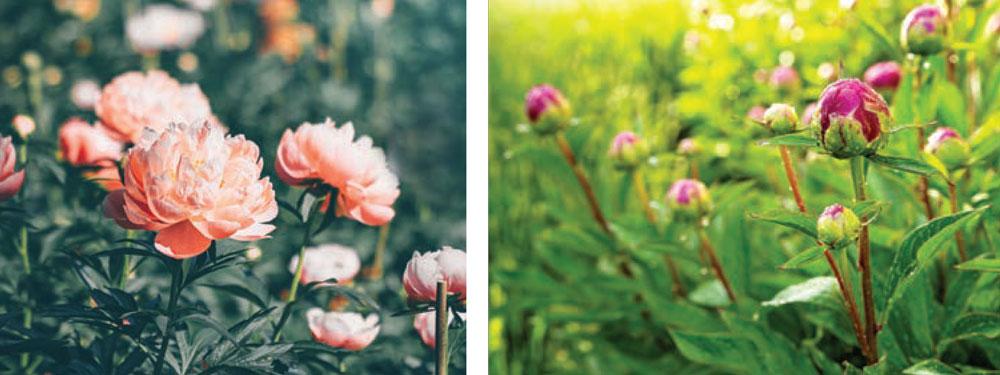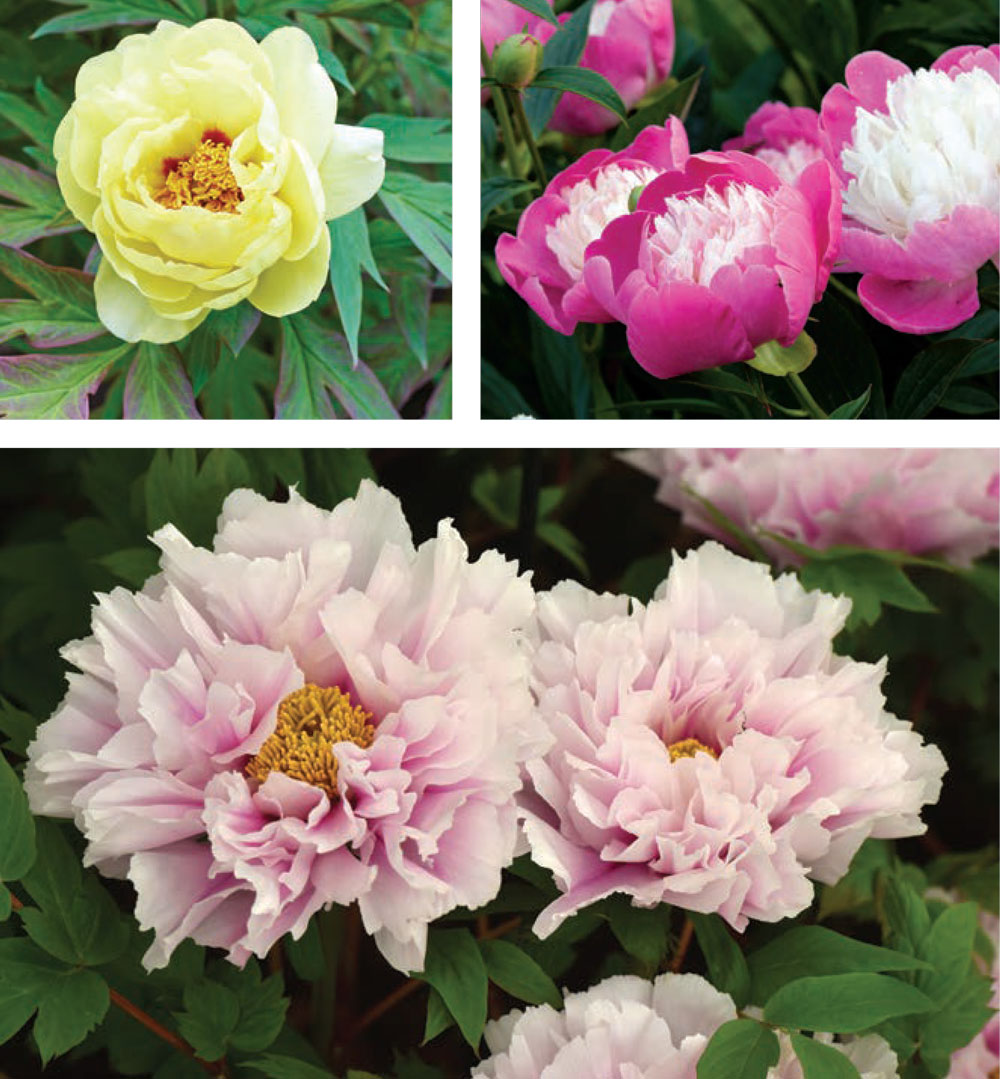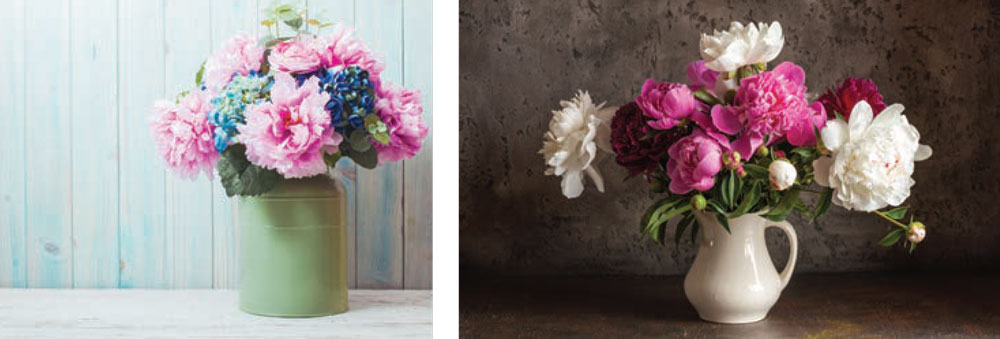Peonies | The Pinnacle of Spring Beauty

The fluffy, feathery blooms of the peony are one of the most familiar signs of spring. This old-fashioned perennial puts on a dramatic display reminiscent of a Victorian cottage garden and is a must in a spring bouquet. It’s like the blooms are meant for picking, as beautiful in a commanding centerpiece as they are in the open air.
If you don’t have peonies in your own garden, you probably make a point to ogle them each spring at your favorite garden spot around town. You may even see them in the oldest parts of your neighborhood, and it’s not uncommon for them to burst out among old homesteads and even abandoned properties in rural areas every year. That’s because they are one of the most hardy and easy-to-care-for perennials, lasting up to 100 years or more. They can truly be called a garden heirloom, growing in the U.S. since the mid-18th century.

While the most traditional garden peonies are white and pink, the latest hybrid varieties come in many colors. They are usually categorized in six flower forms that range from less than 10 petals in a saucer shape, to forms with various colors and attractive stamens, to the oversized, ruffled, cup-shaped blooms we’re all accustomed to.
In our hardiness zone, the bushy garden peonies quickly become the quintessential spring flower as they typically bloom from late April through early June.
High appeal, low maintenance
The American Peony Society recommends planting peonies any time before the ground freezes; late summer and fall is optimal. (If you happen to pick up a potted plant over the summer, don’t wait until fall to plant it, though; get it in the ground as soon as possible).
Peonies thrive in full sunlight and prefer to keep their distance from other plants, so plan a good square yard or at least 3 to 4 feet in diameter for each. Many varieties do well in shadier spots, but you may get fewer blooms and they will be at more risk of fungal diseases, such as gray mold. Peonies prefer humus-rich, fertile, moist soil. Some people say soil that is similar to your vegetable garden is ideal.
Most of the time, you’ll find run-of-the-mill garden peonies as potted plants at the nursery or garden center. Local gardening groups and online companies may also sell them as bare roots. Plant potted peonies according to container directions, and bare roots fairly close to the surface (about 2-3 inches). It’s actually better for the roots to be planted shallow so the cold weather can keep them in dormancy, which is necessary to set the buds.
Two other types of peonies are tree peonies: a woody, taller variety with lush foliage that doesn’t require cutting back to the ground every fall, and a popular hybrid called the Itoh peony that has many more, longer-lasting blooms and inherits the strong stems of the tree peony, so there is no need to stake them.
All newly planted peonies need to be well watered in the first year, though it could take one to two years to see any blooms. By the third year, they should be mature.

Once your plant is well established and major growth occurs, you’ll find that the beautiful but enormous blooms are heavy and prone to drooping, especially during big rains. Plant cages and supports can help sturdy the stems. Many people find it best to place the cage over the stems in the fall, after you’ve cut them back to the ground. Then, in the spring, you can help guide the new stems through the center when they emerge.
Organic mulch and compost is recommended for new plants, and try to keep lawn grass from encroaching, at least until the peony grows large enough to spread out over it. They don’t need to be dug up and divided like many perennials do, and they don’t often take to transplanting too well. “Leave me be” is more their mantra. But you can help them out by remembering to cut them to the ground after they die back and disposing of any dropped foliage around them to help prevent any disease settling in. They perform well as borders, mass plantings, or as an accompaniment to other shrubs, perennials and ornamental grasses.
The ants come marching
If you’ve heard that peonies need an unlikely friend, the ant, in order to bloom, you’ve heard wrong. It’s a myth that they actually need ants to produce their big blooms, but it is definitely true that there’s a relationship there. Call it biological mutualism: where organisms can benefit from each other’s activity. While ants are attracted to the nectar produced when buds are blooming and will leave an odor trail as they march back to tell the rest of the army about their great find, they actually do no harm to the peony. As ants hang out and feed on the sweet blooms, they may be fending off other insects that could do harm, so in a way they’re quite helpful. Don’t worry; when blooming is complete, they’ll be on their way. If you like to cut the flowers but don’t want stowaways inside your home, just shake the blooms or spray them off with water beforehand.
There are not that many insects or pests that are particularly attracted to peonies, which also helps their staying power. Due to the peony’s strong fragrance and intense flavor, deer and rabbits aren’t typically drawn to them.
 Bring the beauty in
Bring the beauty in
Because most peony blooms only stay around for about seven days, and the plants generally stop blooming altogether after about six weeks, you can stretch out the time you have to enjoy them if you know how to cut and store them properly.
Many people grow peonies simply to supply fresh bouquets for spring. The best time to cut peonies is in the morning, when they’re full of moisture and before the midday sun heats them up. Cut them in the budding stage, just as they start to show color and are about the size of a marshmallow (and feel squishy like one). Gardeners call this their “marshmallow stage.” If you cut them in full bloom, they’re likely to last only a few days.
Cut stems at least 14 inches long, and pull off lower foliage to help preserve water and prevent rotting. When they’re cut as buds, you can wrap them in dry newspaper (a few in a bunch) and place them horizontally on a refrigerator shelf, where they should be able to stay for a few weeks. When you pull them out and place in water (about 3 to 4 inches), they should start to bloom in a day or two and will stay beautiful for up to a week. Make sure to cut the stems at a diagonal angle and use cold water or an ice cube. If you’re in a hurry for those blooms to appear full for your dinner party that night, use warm water.
If fragrance is what you’re after in your home, consider these favorites of the American Peony Society: Festiva Maxima, Louise Lossing, Moonstone, Mrs. Frank Beach, Myra Macrae, Myrtle Gentry, Nancy Nora, Phoebe Cary and White Frost. Other suggested red and red-tone peonies known for their fragrance are Burma Ruby, Diana Parks, Flame, Henry Bockstoce, Mary Brand and Postilion.

Peonies make a splash in bouquets, even when standing by themselves. It’s no wonder they’re a favorite for brides to carry down the aisle. Simple and vintage-looking, they’re a silent star of the show. The best thing is that you don’t need many peony blooms to create a big, dreamy bouquet. And even if you have no floral design skills, the natural beauty of peonies will make you look like you do.
To stick with the simplistic style, try pairing white peonies in an arrangement with white roses, calla lilies, eucalyptus sprigs and poppy pods. Or arrange a few different-colored peonies with a few hydrangeas.
Other tips for caring for your cut peonies include trimming the stems and replacing the water every other day. Keep the vase away from direct sunlight and, if you have the room, put the whole arrangement in the fridge overnight. You’ll be amazed at how many more days you will add to its life.
As spring approaches, maybe it’s time to start thinking of new growth for your garden—a gift that could pay off in a few short years and then many, many more to come. Add peonies to your landscape or, if you already play host to some, try planting a new variety with different colors to liven up that bare spot you just haven’t yet filled. Their timeless beauty and seemingly independent nature truly make the peony a perfect spring perennial. ✦
American Peony Society, Burma Ruby, Diana Parks, easy-to-care-for perennials, Festiva Maxima, Flame, garden heirloom, Henry Bockstoce, Louise Lossing, Mary Brand, Moonstone, Mrs. Frank Beach, Myra Macrae, Myrtle Gentry, Nancy Nora, old-fashioned perennial, peonies, Phoebe Cary, Postilion, spring bouquet, White Frost







Karen Turner
Good, in-depth article on peonies…and I’ve never seen a picture of one I didn’t love!
I have grown them for 40+ years, our home is named Peony Park, here in Bonsack Va. I grow 167 peony shrubs and about 70 varieties. Send your writer and photographer to see all the new ‘landscape’ peonies along with the heirlooms and those developed in the 20th century.
The ‘landscape’ peonies were barely mentioned in the article but they are a sight to see, they are light and airy and avoid the common issues of older varieties you mentioned. And there is a huge selection of varieties on the market with a large variety of colors.
Karen Turner